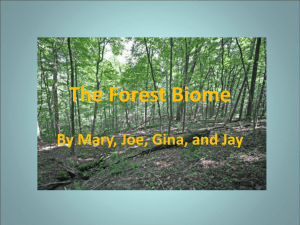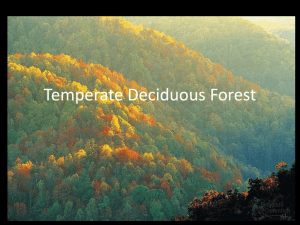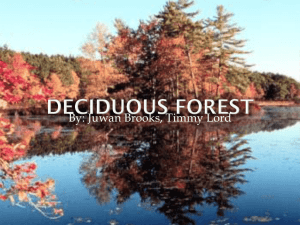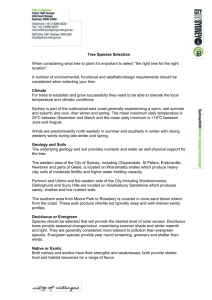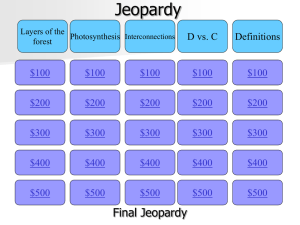Botany 155 Laboratory Exercise 7 Hueston Woods
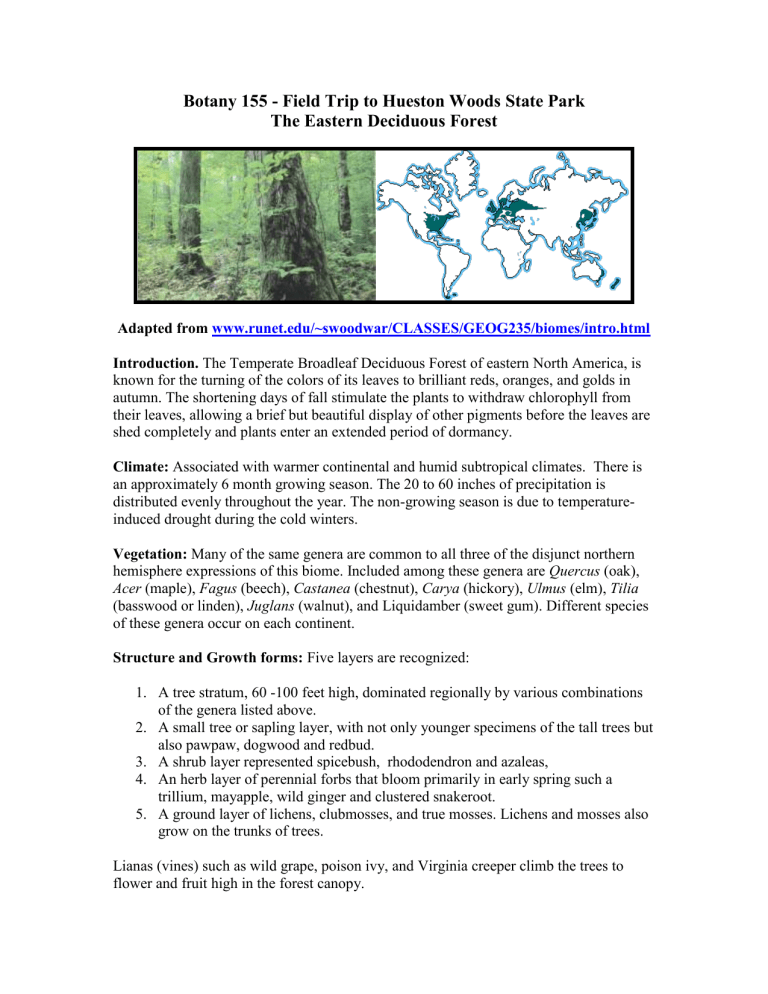
Botany 155 - Field Trip to Hueston Woods State Park
The Eastern Deciduous Forest
Adapted from www.runet.edu/~swoodwar/CLASSES/GEOG235/biomes/intro.html
Introduction. The Temperate Broadleaf Deciduous Forest of eastern North America, is known for the turning of the colors of its leaves to brilliant reds, oranges, and golds in autumn. The shortening days of fall stimulate the plants to withdraw chlorophyll from their leaves, allowing a brief but beautiful display of other pigments before the leaves are shed completely and plants enter an extended period of dormancy.
Climate: Associated with warmer continental and humid subtropical climates. There is an approximately 6 month growing season. The 20 to 60 inches of precipitation is distributed evenly throughout the year. The non-growing season is due to temperatureinduced drought during the cold winters.
Vegetation: Many of the same genera are common to all three of the disjunct northern hemisphere expressions of this biome. Included among these genera are Quercus (oak),
Acer (maple), Fagus (beech), Castanea (chestnut), Carya (hickory), Ulmus (elm), Tilia
(basswood or linden), Juglans (walnut), and Liquidamber (sweet gum). Different species of these genera occur on each continent.
Structure and Growth forms: Five layers are recognized:
1.
A tree stratum, 60 -100 feet high, dominated regionally by various combinations of the genera listed above.
2.
A small tree or sapling layer, with not only younger specimens of the tall trees but also pawpaw, dogwood and redbud.
3.
A shrub layer represented spicebush, rhododendron and azaleas,
4.
An herb layer of perennial forbs that bloom primarily in early spring such a trillium, mayapple, wild ginger and clustered snakeroot.
5.
A ground layer of lichens, clubmosses, and true mosses. Lichens and mosses also grow on the trunks of trees.
Lianas (vines) such as wild grape, poison ivy, and Virginia creeper climb the trees to flower and fruit high in the forest canopy.
1. Take an inventory of the plants you observe as you hike through Hueston wood:
Layer Plants observed
Trees
Small
Trees
Shrubs
Herbs
Ground
Layer
Vines
2. Do you believe Hueston Woods is a good example of an Eastern Deciduous Forest?
Why?


